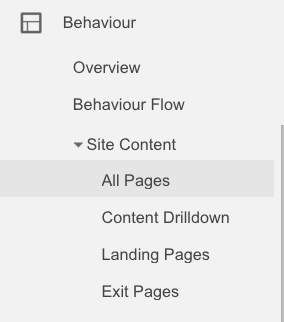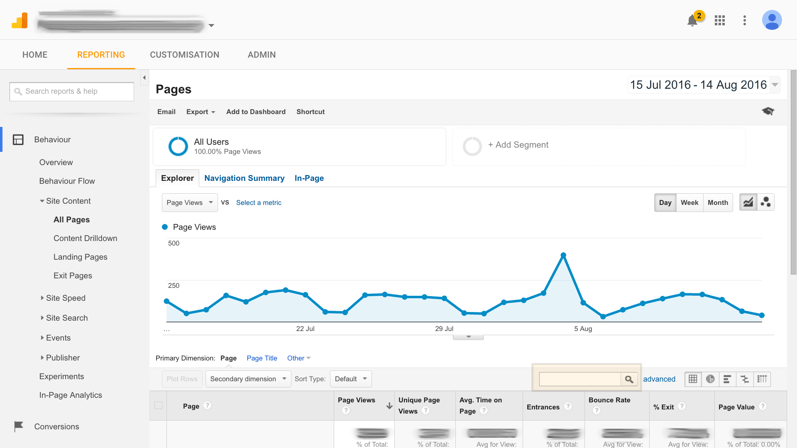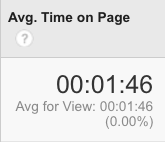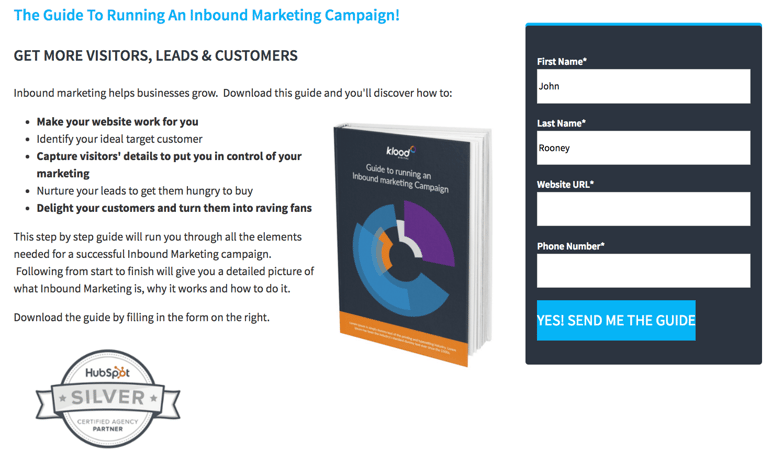
Get weekly
HubSpot updates
So, you’ve got a nice looking and intuitively designed website, and optimised the on-page content for the search engines. What’s next? How do you transform your website into a lead-generation machine?
Well, if you’ve ever read a digital marketing or SEO blog, you probably know that the answer is content. All of the content.
Visual content, blogs, social media posts, guest blogs, videos - the more the merrier! Just keep on producing it and watch the leads roll in…
So what do you do when you’ve followed your content generation plan to the letter but nothing’s happening? Your blog posts aren’t driving any new website traffic, your videos aren’t being watched and no one is sharing anything on your social media profiles.
Here are five signs your content marketing efforts are letting you down, and what you can do to solve it.
Low number of page views
Let’s start with an obvious one.
If your content marketing isn’t getting many views then that’s a pretty clear indicator that something is going wrong.
You’ll need a Google Analytics account and a little code in the backend of your website to find this out, but don’t worry, it’s free to sign up. To find page view data on individual pages, log in to the dashboard and click on the ‘Behaviour’ tab in the left-hand navigation panel:
Now select ‘All Pages’:
From here you can either search for your blog page or individual blog posts in the search bar. You search by each page’s URL suffix, for example ‘/blog/’ or ‘/blog/my-first-post’.
You will then be able to see both ‘Page Views’ (total number of users to have viewed the page) and ‘Unique Page Views’ (total unique number of users to have viewed the page) over a given period. The time frame you’re viewing can be changed using the date function in the top right hand corner of the dashboard.
If ‘Page Views’ and ‘Unique Page Views’ are low then this could be because of a few different problems.
Your content isn’t ranking
We’ll cover this point in more detail later, but one of the main reasons people aren’t reading your content is because they can’t find it. Blog posts especially give you a great opportunity to target keywords and search queries that are relevant to your industry.
Your blog post titles aren’t compelling
If your blog posts and other content marketing does rank reasonably well - and is being promoted via various different channels - but still isn’t picking up many views it could be that your titles aren’t compelling or clear enough. Take a look at our blog post, 6 Steps to Writing Awesome Article Titles that Drive Traffic to help you solve this problem.
Your content marketing is hidden away
A lot of organisations make the mistake of creating fantastic content, but then hiding it away on a blog or news page that isn’t easy to find.
Make sure that users can navigate easily to your content from every page of your website, and that you provide internal links to it whenever it’s appropriate to do so.
Low ‘Average Time on Page’

Of course getting users to your content is only half the battle - you also want them to consume it once they arrive.
If the ‘Average Time on Page’ metric is low, that suggests that people aren’t finding your content useful, interesting or entertaining, while it might also be a sign that your headlines are misleading. You can find the time on page data next to ‘Unique Page Views’ in Google Analytics.
What constitutes a low average time on page will depend on the content, but as a general rule anything less than a minute suggests that users aren’t being engaged.
Work out which topics and types of content are performing best with this metric and do less of the things that aren’t working.
Not generating enough leads
Your website is an essential source of lead generation, but you can’t just rely on your sales content to do the work - your content marketing needs to contribute too.
Gated content
Downloadable content offers that sit behind signup forms are a key part of the inbound marketing methodology, but if your content isn’t being downloaded it’s not going to be doing you any good at all.
Is the title compelling? Does the copy on the landing page outline the benefits to the user of downloading the content? Is the subject even of enough interest to your target audience? If you’re getting the content in front of people but they aren’t accessing it, it’s likely because one of these three things isn’t being fulfilled.
Content subscriber lists
If you’re regularly producing content then you might also have an email newsletter or content subscriber list set up to deliver that content to your prospects.
This represents an excellent opportunity to nurture those prospects and push them along the buyer journey, however if they aren’t signing up for your content updates it could be for a number of reasons.
Firstly, it might simply be that your signup forms aren’t doing a good job. This might be because they’re not visible enough, for example if they’re stuck at the very bottom of all your content, or that they are asking for too much personal information up front.
People are increasingly protective over their data, especially phone numbers, so if your signup form requires a telephone number this could be putting them off.
If your content management system allows for it, use smart forms that remember what information people have provided you with previously and automatically adapt accordingly. This way you can ask for minimal data when they first subscribe to your newsletter or download a piece of gated-content, and ask for further information next time.
Remember to try split testing to see what works best for your audience.
No social engagement
 When we first get a great idea for a piece of content we all think that it’s going to go viral and take the internet by storm.
When we first get a great idea for a piece of content we all think that it’s going to go viral and take the internet by storm.
Unfortunately, your content represents a miniscule proportion of the what is put out onto the web on a daily basis. In fact, it can be pretty hard to even get a decent level of social engagement unless you really work at it.
If your content marketing is struggling to gain those all important Likes and Retweets, it might be because it simply isn’t resonating with your target market. A lot of organisations fail to take social media seriously as a marketing channel, and as a result are happy to just publish ‘fluff’ content that isn’t actually of any relevance to what you do or interest to your customers.
Do some research to identify exactly what your target market are talking about online: what conversations are they having about your industry; what are they saying about your brand; what are their different (though related) interests? Once you’ve found these things out you’ll be able to better understand how to engage with them on social media.
Of course if you don’t have enough fans or followers in the first place then your social media posts simply aren’t going to get in front of many people in the first place, making it an uphill task for your content to gain any traction from the start. Fortunately, you don’t have to just rely on organic reach, and a little budget can go a long way.
Promote your social profiles with ads to build your following and apply spend to your posts to boost their reach until you’ve grown a larger, engaged audience who will start to share and ‘Like’ your content organically.
Your content isn’t ranking
If your content doesn’t rank for the phrases that relate to it then you’re going to have to spend significantly more money on paid promotion to get it in front of your audience.
How well your content ranks will depend a lot on your website’s domain authority, but there are things you can do to make sure each piece of content you create is as effectively optimised as possible too.
Check out our free eBook, The Beginner’s Guide to Onpage Optimisation, to discover how you can tailor your content for the search engines, as well as our blog, The Do’s and Don’ts of Onpage SEO.
Alternatively, have a look at our book on the 6 keys to digital marketing strategy - you can download that by clicking below.

